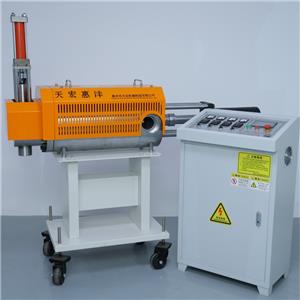One of the paths of green development of plastic packaging: the use of recycled plastics
Among many packaging materials, plastic packaging accounts for the highest proportion. It is worth noting that abandoned plastic packaging will weather and decompose into fine particles, which may eventually enter the human body through various forms. But plastic packaging is essential for goods, in the case that it can not be replaced, how to eliminate its harm?
In the fierce market competition environment, packaging is essential for goods. It not only has the function of protecting goods, but also has the function of convenient transportation, conducive to brand communication, and showing the green image. Therefore, enterprises in packaging, the use of a variety of materials to adapt to different scenarios: plastic film, plastic packaging boxes and containers; There are paper and cardboard containers; There are metal packaging containers; There are glass packaging containers and wooden packaging containers. Among them, plastic films and containers accounted for the largest proportion, accounting for about 45%; Followed by paper and cardboard containers, accounting for about 25%; Again, separate packaging for metal, glass and wood.
Plastic packaging is popular with businesses because of its excellent plasticity and stretchability, lightweight, easy to transport, easy to print trademark advertising and other characteristics. With the increase of carbon reduction demand in the future, the energy consumption and carbon emissions of plastic packaging production are much lower than other packaging, coupled with the larger volume of unit weight packaging, further reducing the average energy consumption and carbon emissions, and the proportion will be higher. Due to environmental protection needs, the growth rate of paper packaging will be smaller than the growth rate of plastic packaging demand in the future. It is expected that by 2035, the proportion of plastic packaging will reach more than 50%.
Plastic packaging has many advantages, but it can not ignore its negative effects. Of course, these negative effects are not caused by plastic packaging, but due to the failure to do a good job of garbage classification. In recent years, the amount of plastic recycling in China has been maintained at about 18 million tons per year.
The main reason why the amount of plastic recycling has not increased significantly is that the recycling rate of plastic packaging, which accounts for the main force of plastic consumption, is low, only about 12%. In addition to incineration and centralized landfill treatment, some of these unrecycled plastic packaging will be lost in the soil and rivers, lakes and seas. Discarded plastic packaging will weather and break down into fine particles, which will eventually enter the human body through various forms. According to the University of Newcastle in Australia, an adult consumes about 5 grams of plastic per week, which is equivalent to the plastic used in a credit card, and a person's lifetime is equivalent to the plastic ingested by the weight of two large garbage cans. If all of the plastic ingested by the human body is excreted, it would not cause damage, but Alessandro Svelato's team at the Hospital SAN Giovanni Callibita Fettna Feratelli in Rome analyzed six placentas using Raman nanomachorimeters. Surprisingly, 12 spherical or irregularly shaped microplastics were found in four placentas. The size is between 5 and 10 microns. Therefore, we must pay attention to the impact of waste plastic packaging.
Since plastic packaging is important and can not be replaced, but can not ignore the harm caused by it, so the green development of plastic packaging has become an inevitable trend. There are three paths for the green development of plastic packaging: one is to use recycled plastics, the other is to use degradable plastics, and the third is to use high-performance materials. This article mainly introduces the first path: using recycled plastics.
In 2035, the scale of plastic recycling in China will reach 38 million tons. There are three major difficulties in the large-scale use of recycled plastic packaging.
First, the stability of recycled plastics is poor. Recycling enterprises are mostly small and medium-sized enterprises, and their recycling radius is small, and expanding the recycling radius is bound to let high freight "eat" meager profits. The recycling radius is small, and there is the problem that all kinds of plastics in the area need to be recycled, such as household appliances, plastic bags, lunch boxes, toys, bottles, etc. The large variety leads to high sorting cost, which increases the total cost; The quality of recycled plastics is extremely unstable, which affects the recovery rate.
The solution is to increase the transport distance of waste plastics, such as in Shandong, lunch boxes are shipped to Dezhou, plastic bags are shipped to Liaocheng and so on. By increasing the transport distance to reduce the sorting cost, improve the quality stability of recycled plastics, increase the price of products. Of course, the path needs to have a sustainable mode of operation, that is, the sorting cost reduction plus the price increase and the future carbon price need to be greater than the cost of the increased distance. From an estimated point of view, every 1 ton of plastic recycling, the life cycle of carbon reduction of 2 to 4 tons, with the future of China's carbon price, long-distance transportation of waste plastics will effectively improve the recycling of recycled plastics.
Second, the recycling enterprise has no input ticket problem. Whether recycling companies recycle plastic in the wilderness, the lake and the sea by themselves, or through scavengers, into the community to buy waste plastic, recycling companies are difficult to receive invoices. The lack of an input ticket will hinder the expansion of the scale of the enterprise, especially in the future, the price of recycled plastics will be higher than the price of raw materials, and it is crucial to have an invoice. The solution of a recycling enterprise in Heilongjiang is to entrust individual industrial and commercial enterprises to collect waste plastics, and then individual industrial and commercial enterprises to sell waste plastics to recycling enterprises, individual industrial and commercial enterprises can invoice 1.2 million yuan a year, no input ticket pressure. In this way, the recycling enterprise will solve the problem of input tickets.
Third, there is too much composite packaging, and many packaging cannot be recycled. Due to the many functional requirements of plastic packaging, it is difficult to meet the packaging needs of a single material, and only composite packaging can meet the needs of businesses. However, composite packaging is a nightmare for recycling, and physical recycling methods are difficult to work. Therefore, there are the following solutions, the first is the use of metallocene materials for a single material design, the use of different grades of metallocene materials to mimic different types of plastic to achieve different functions. The second is the use of chemical recycling method, chemical recycling can not distinguish the type of plastic, plastic can be broken down into small molecules, continue to combine into new plastics, and the quality will not be degraded. However, at present, whether the use of a single material design or chemical recycling, the cost is high. Looking forward to the future, with the imposition of packaging taxes in Europe and the increase of carbon prices in China, these schemes will be profitable.
China's plastic recycling will increase significantly. In 2023, the amount of plastic recycling in China is about 19 million tons, mainly physical recycling. Under the joint promotion of active and passive factors such as the construction of a resource-saving society in China, the increase of carbon prices, the industrialization of chemical recycling, and the increase of natural carrying capacity, the scale of plastic recycling will be greatly increased, and it is expected to reach 38 million tons by 2035, of which 30 million tons of physical recycling and 8 million tons of chemical recycling will effectively promote the green development of the plastic packaging industry.




